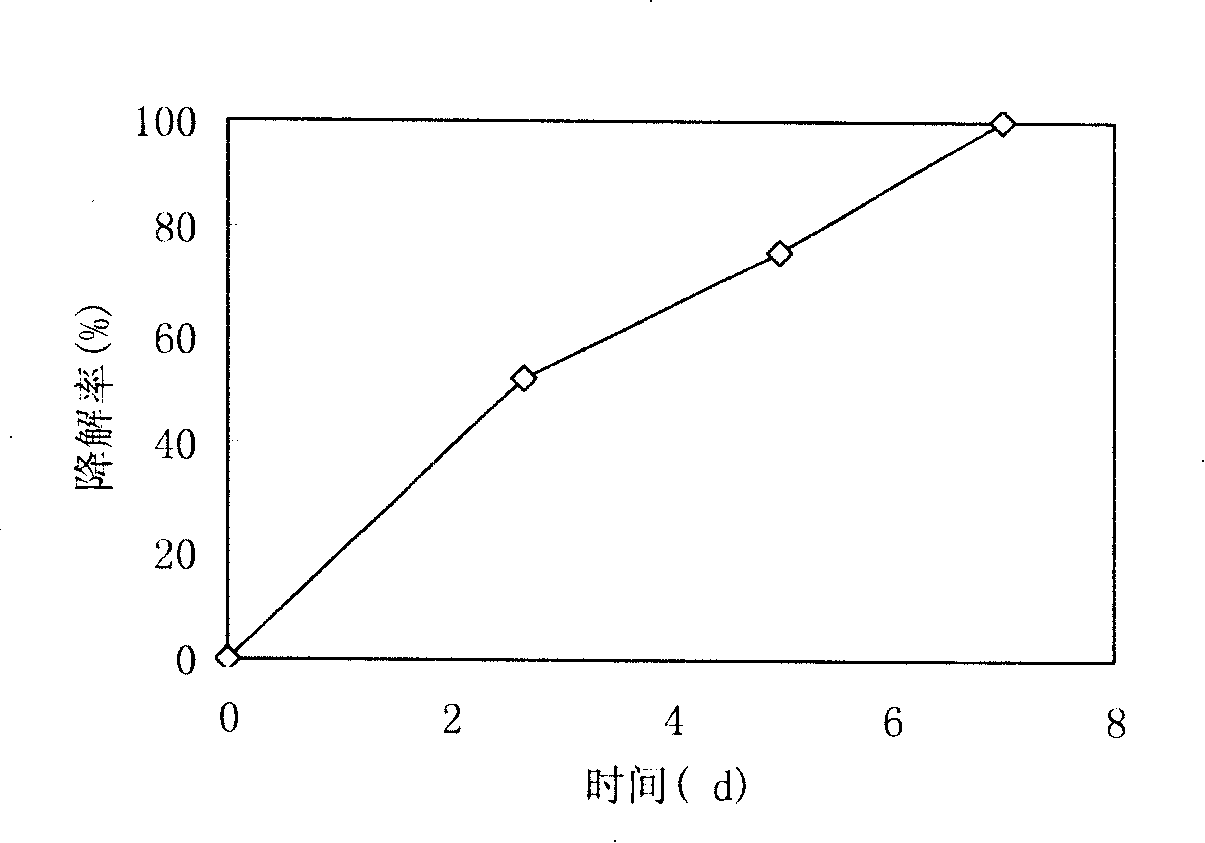Method for preparing immobilization microorganism particles using pottery ball as carrier
A technology for immobilizing microorganisms and microorganisms, applied in the direction of immobilization on or in inorganic carriers, biological sludge treatment, etc., can solve the problems of unreported sediment restoration, and achieve practical safety, reliability, good effect and low price. Effect
- Summary
- Abstract
- Description
- Claims
- Application Information
AI Technical Summary
Problems solved by technology
Method used
Image
Examples
Embodiment 1
[0027] The method for immobilizing microorganisms with pottery beads comprises the following steps: firstly, seed liquid is prepared, and inorganic carrier pottery beads are treated simultaneously; Specific steps are as follows:
[0028] (1) Preparation of seed solution
[0029] Under facultative anaerobic conditions, add 160ml of enriched medium to a 250ml anaerobic bottle, sterilize, add 18ml of seed solution after cooling, and put it in an incubator at 28°C for constant temperature and static culture for one week, so that the microorganisms are in the right condition. Number of growing seasons, spare.
[0030] The anaerobic bottle is a medical infusion bottle; the culture medium is calculated by weight percentage: glucose 0.1%, peptone 0.05%, yeast extract 0.05%, NaCl 0.5%, K 2 HPO 4 0.5%, KH 2 PO 4 0.3%, MgSO 4 ·7H 2 O 0.05%, pH7.2. The sterilization conditions are: 0.1Mpa damp heat sterilization for 30 minutes. Described seed liquid is the facultative anaerobic...
Embodiment 2
[0040] The difference from Example 1 is:
[0041] (1) Preparation of seed solution
[0042] Under facultative anaerobic conditions, add 180ml of enriched medium into a 250ml anaerobic bottle, sterilize, add 16ml of seed solution after cooling, and put it in an incubator at 28°C for a week of constant temperature and static culture, so that the microorganisms are in the right condition. Number of growing seasons, spare.
[0043] The medium is calculated by weight percentage: glucose 0.2%, peptone 0.06%, yeast extract 0.06%, NaCl 0.6%, K 2 HPO 4 0.5%, KH 2 PO 4 0.3%, MgSO 4 ·7H 2 O 0.05%, pH7.2. Sterilization, the sterilization conditions are: 0.1Mpa damp heat sterilization for 30 minutes. The seed liquid is a facultative anaerobic mixed microorganism containing 2ml of nitrobenzene solution with a concentration of 3mg / ml, and the concentration of nitrobenzene is 30.30mg / L.
[0044] (2) Pretreatment of the carrier
[0045] Pottery beads (purchased from Jinzhou Daye Ce...
PUM
 Login to View More
Login to View More Abstract
Description
Claims
Application Information
 Login to View More
Login to View More - R&D Engineer
- R&D Manager
- IP Professional
- Industry Leading Data Capabilities
- Powerful AI technology
- Patent DNA Extraction
Browse by: Latest US Patents, China's latest patents, Technical Efficacy Thesaurus, Application Domain, Technology Topic, Popular Technical Reports.
© 2024 PatSnap. All rights reserved.Legal|Privacy policy|Modern Slavery Act Transparency Statement|Sitemap|About US| Contact US: help@patsnap.com









